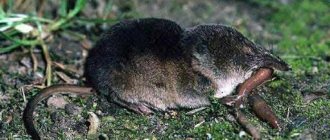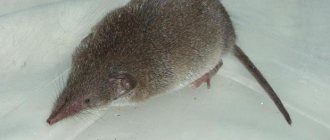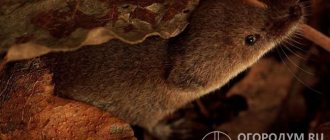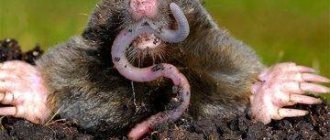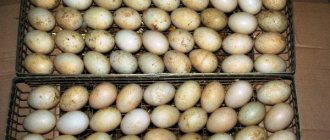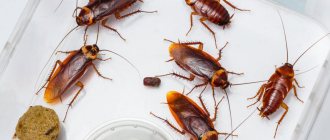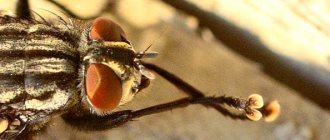Shrews (Soricidae) are small insectivores that resemble mice in appearance, but with a characteristic long, pointed nose.
It is one of the most species-rich families of mammals, including about 300 species in 25 genera. They are distributed over most of the globe, except Antarctica, Australia and the islands north of it, and parts of South America. They are found in various types of forests, meadows, deserts and highlands.
Shrews are often considered “primitive” animals. In fact, it is an advanced family among placentals that appeared in the Tertiary period. The earliest fossil remains were discovered in North America and date back to the middle Eocene (45 million years ago). Eurasian fossils date from the early Oligocene (34 million years ago), and African shrews are known from the middle Miocene (14 million years ago).
The common shrew was one of the first to be described by the English naturalist Edward Topsell in 1607. It must be said that this description was completely unflattering. “These greedy animals,” he wrote, “pretend to be meek and passive, but if you touch them, they bite deeply and poison you fatally. They are fierce and tend to bite everything around them.”
Interestingly, in Ancient Egypt, shrews were mummified, and, apparently, the African shrew and the lesser Egyptian shrew were deified.
Habitat
What attracts attention to this animal is its very small size. For this reason, they are usually considered to be the smallest predators on the planet . People who have frequently encountered shrews are aware of their aggressive nature, which explains their nickname “little devil.” In total, the shrew genus includes approximately 300 species, which can be represented in two families:
- shrews (with white teeth);
- shrews (with dark-colored teeth).
Among the most common representatives of the family, the following species are worth highlighting:
- tiny shrew;
- dwarf shrew;
- water cutter, etc.
You can meet these miniature animals in almost any part of the globe , since they thrive in areas with different climates.
Their habitat is very diverse: shrews live in South America, Colombia, the USA, and Russia. You won't find them except in the polar regions and Australia.
In our country, this family is represented by 20 species. The most common of them is the shrew. The animal has a very small body, which can reach 3-18 cm in length.
Video
Experienced gardeners share educational information about the life activity of shrews and ways to repel these insectivores in the following videos:
Sources
- https://poklopu.ru/drugie-vrediteli/zemlerojka.html
- https://moypitomec.ru/dikie-zhivotnye/mlekopetayushhie/zemlerojka-foto-i-opisanie.html
- https://ogorodum.ru/kak-izbavitsja-ot-zemleroek-na-uchastke-samyj-jeffektivnyj-sposob.html
- https://luckclub.ru/pro-zemlerojku-kak-borotsya-s-zemlerojkami-na-sadovom-uchastke
- https://wildfauna.ru/zemlerojka
- https://urozhajnayagryadka.ru/kto-takaya-zemlerojka-i-kak-s-nej-borot-sya-na-ogorode/
- https://prusakam.net/zemlerojka/
- https://www.ivd.ru/stroitelstvo-i-remont/dacnyj-ucastok/kak-borotsya-s-zemlerojkoj-na-dachnom-uchastke-10-sposobov-59531
3 642
Characteristics
The shrew's fur is thick and short and has a brown color. The teeth are sharp, the muzzle is elongated, which is decorated with a movable proboscis. She needs the latter to search for food: she very easily loosens and digs up the ground with it. On the sides of the shrew there are special glands that secrete a persistent odor , which is necessary for protection from enemies.
Shrews have a keen sense of touch and smell, but they do not see as well. They remain active throughout the year: with the arrival of spring, they begin to scour the leaves, looking for food, and with the onset of winter cold, they are also busy searching for food under the snow cover. Females give birth once or twice a year, and from 1 to 10 babies are born to them at a time. Most often they reproduce in the warm season - spring and summer. Shrews do not live long - no more than 18 months.
Shrew: description
As already mentioned, the shrew has an external resemblance to a mouse, but differs from it in its long proboscis and tail. In temperate latitudes, you have to deal more with two types of shrews: the pygmy shrew and the tiny shrew. As a rule, the 2nd type is more widespread.
This animal can be distinguished from other similar animals by a number of characteristics:
- The shrew has a more elongated head with a movable proboscis of a lighter shade.
- The body, 18 to 25 cm long, is covered with short but thick hair.
- The fluffy coat is dark brown with a gray tint.
- The shrew's tail is thicker and longer than that of the mouse.
- The tiny shrew measures no more than 5 cm.
- The shrew moves quickly and builds long tunnels underground, similar to mole holes.
- As a rule, it is found mainly in mid-latitudes. Prefers more humid places with sufficient food available. They can often be found near bodies of water, where they occupy empty holes of mice and moles.
- The shrew does not feed on potato tubers, since its diet consists of organisms of animal origin living in the thickness of the earth.
- The nest of this animal is not large, therefore inconspicuous, lined from the inside with dry branches and leaves.
- Each animal has its own “hunting grounds”, several tens of square meters in size.
- The shrew's diet consists of small and large insects, earthworms, toads and small lizards.
- The shrew stores excess food in a nest, which is located underground.
- The shrew has a fast metabolism, therefore, it has to actively move underground most of the time in search of food.
- A shrew can fight to the death for its territory.
Where is it found?
Shrews are terrestrial animals that are used to settling in areas with dense vegetation and gardens so that they have a soft litter of last year's foliage on which to sleep comfortably.
When building their home, these animals, as a rule, make it shallow. But usually they find an empty house left by the owner and live there. Animals often make a home in rotten trees, where there is often a cozy crevice or hollow. Shrews sleep during the day and go out hunting at night. Moreover, each animal has its own habitat boundaries. Sometimes these areas converge in certain places, but the animal will never enter someone else's territory. This is a ban for them.
They are very scrupulous about their diet and will not allow anyone to hunt on their lands. But if it happens that someone else’s shrew ends up on their property, then the owner will enter into battle with the uninvited guest. And often the fight ends in the death of one of the animals. Few people can allow shrews to take their prey, so these animals are ready to defend their food even from lizards and mice.
Shrews are very prudent creatures . After the animal eats insects in one area, it begins to look for them in another, and gives the previous one time to replenish its food supplies.
Reviews from gardeners
Konstantin, 64 years old, Rostov
The simplest methods helped to scare away shrews from a summer cottage: acoustic and “aromatic”. Before the autumn digging of the garden, dried marigolds crushed into dust were scattered, and rags soaked in turpentine were buried along the entire border of the plot. Pieces of rotten fish were placed in the holes. In case the shrews bypassed the bait, additional metal reinforcement was dug into the garden bed at a slight angle to the ground, to a depth of 40-50 cm. A plastic bottle was placed on it, which moved with a light blow of wind, and the noise from the vibration of the steel rod scared away the animals. Champagne bottles, also at an angle, were buried in the ground - the effect was the same - an unbearable roar was heard.
Veronica, 56 years old, Ryazan region
In the garden plot we did not decide to use poison or traps for humane reasons, so we save ourselves from shrews using the Grad ultrasonic device. I insert batteries into the device, seal it in a plastic bag and dig it near the holes to a depth of 10 cm. After 2-3 weeks I observe the complete disappearance of the pest. At the same time, ultrasonic waves do not have a harmful effect on animals and people.
Semyon, 48 years old, Krasnodar region
In my apiary in mid-November, a shrew got into the habit of emptying the hives. It is more dangerous than ordinary mice because it is small and very voracious. To drive it away, I placed a fine-mesh (size 6 mm) grate between the bottom and the lower body, but the tight holes prevented the bees from exiting. In March I replaced it with a mesh with 8-10 mm cells. In addition, I cleaned the hives of dirt and placed a pollen collector on the entrance. After that, all the problems with pests disappeared.
Nutrition
Shrews are designed in such a way that their digestive system must constantly work.
Therefore, they almost constantly have to hunt for food, taking only short rest breaks. Therefore, they live differently from all other animals. For them, the day is divided into two parts - hunting and sleep. Each animal lives its own day. For some they are divided into 10 intervals, for others it includes 78. In other words, the animal will have to go to bed and get up 78 times a day to get food. Shrews require a very large amount of food . They must constantly maintain a certain body temperature and always have a supply of energy. And this is only possible with the continuous process of digestion, which is inevitably accompanied by the release of heat. Therefore, they have to consume large amounts of food. Sometimes shrews eat an amount of food in a day that can be more than their own weight.
Lack of food is very dangerous for the life of a shrew: if in summer they can survive without food for no more than 8-10 hours, then in winter it is enough to remain without food for more than 3 hours for the death of the shrew to occur.
Food at different times of the year
The food of shrews is quite varied . It all depends on what time of year she gets food for herself.
- In spring and summer, it eats mainly insects: mole crickets, worms, slugs, caterpillars and woodlice. If an animal has not eaten for a long time, then it can behave like a predator and try to catch small rodents - mice. Water shrews feed on small fish and frogs;
- In winter, it is not so easy to get food for shrews. Bare soil no longer contains as much food as in summer. They have to break the snow cover to get to the soil, looking for insects in it. Shrews can also eat plant seeds. Considering that in winter there is very little food left, only the most persistent and active ones survive until spring.
Shrew conservation
Photo: Shrew from the Red Book
There is only one species in the Red Book of Russia: the giant shrew. Indeed, the largest representative of the genus. Category 3 – rare species with low numbers and limited range. According to the IUCN, it falls into the reduced risk category. An inhabitant of deciduous and mixed forests of Southern Primorye, it was found in only three places: in the Lazovsky and Kedrovaya Pad nature reserves, as well as near lake. Hanka.
The international IUCN Red Book includes:
- The great-toothed shrew (S. macrodon) is a vulnerable species with a shrinking range. Several localities are known in the mountains of Mexico in forests at altitudes from 1200 to 2600 m. Found over an area of 6400 km², estimated range 33627 km²;
- The Carmen Mountains shrew (S. milleri) is a vulnerable species. It is found in the mountain forests of Mexico at altitudes of 2400 - 3700 m. The estimated range is 11703 km²;
- The Pribilof shrew (S. pribilofensis) is an endangered species that is found in coastal meadows only on one of the Pribilof Islands (USA) in the Bering Sea. The area of the island is 90 km². The number of species is 10,000 – 19,000;
- Sclater's shrew (S. sclateri) is a critically endangered species. There are 2-3 known locations in Mexico. Lives in forests whose area is shrinking. Nothing is known about the number;
- The San Cristobal shrew (S. stizodon) is a critically endangered species. Lives in damp mountain forests. One location is known in Mexico, fortunately in a protected area.
The conservation measures are not original: preserving undisturbed areas where animals could live in numbers sufficient to reproduce. Nature abhors a vacuum. Any ecological niche must be occupied, and even such ephemeral creatures that exist on the edge of the capabilities of warm-blooded creatures find a place for themselves. Even if not under the sun, but in the shade of other organisms, the main thing is that the shrew can survive.
Tags:
- Shrews
- Burozubochy
- Deuterostomes
- Bilaterally symmetrical
- Animals of Asia
- Animals of Alaska
- Swamp animals
- Animals of Eastern Siberia
- Animals of the mountains
- Animals of Eurasia
- Animals of Europe
- Animals of Transcaucasia
- Animals of Western Siberia
- Animals of the Caucasus
- Animals of the Kaluga region
- Animals of Kamchatka
- Animals of Canada
- Animals of Karelia
- Animals of the Red Book
- Animals of the Red Book of Russia
- Animals of the forest
- Animals of the forest-tundra
- Meadow animals
- Animals of Mexico
- Animals of the Moscow region
- Animals starting with the letter B
- Animals of Russia
- Animals of North America
- Animals of Siberia
- Animals of Scandinavia
- Animals of the steppe
- Animals of the Russian steppe
- Animals of the Subarctic Zone
- Animals of the Subtropical Zone of the Northern Hemisphere
- Animals of the tundra
- Animals of the Temperate Zone of the Northern Hemisphere
- Animals
- Shrews
- Shrews
- Endangered animals
- Red Book of the Amur Region
- Red Data Book of Kaluga Region
- Red Book of Kamchatka
- Red Book of Karelia
- Red Book of the Moscow Region
- Red Book of the Ryazan Region
- Red Book of Siberia
- Red Data Book of the Tver Region
- Laurasiotherium
- Insectivores
- Insectivores
- Placental
- Vertebrates
- Rare animals
- Rare animals of the world
- Rare animals of Russia
- Chordates
- Ghostostomes
- Quadrupeds
- Eukaryotes
- Eumetazoans
Benefits and harms
Perhaps someone will consider the shrew to be a worthless animal, but in reality this is not the case. For humans, this animal can be very useful .
Looking for food, shrews loosen the soil in gardens and vegetable gardens, which they do very well thanks to their unique trunk nose.
During the so-called “plowing” the soil is saturated with oxygen and at the same time cleared of harmful insects and larvae. But if you are used to seeing beautiful lawns, then, of course, the shrew will cause you a lot of trouble because of the constant minks that you will encounter on the site.
Shrews are incredibly useful creatures because they can reach many harmful insects in places that other insectivores and birds cannot reach. It is not difficult for them to find pests under stones , under snow and in the depths of burrows.
When you first meet these animals, they seem to be quite cute and fluffy creatures that are not capable of harming humans. However, if you try to catch this animal, they may bite, and the person may experience severe pain. Therefore, if you suddenly meet a shrew on your site, then forget about catching it or picking it up.
Ways to fight
For prevention, nets with small cells are installed around the perimeter of the site. The foundation is buried at least one and a half meters. You can regularly dig up the garden to a depth of 25 cm to destroy holes and labyrinths. Some also lay a fine metal mesh under the lawn.
If the shrews are already infested and you need to get rid of them, they use several types of methods.
Physical
This category includes all methods directly related to shrews:
- Catching with cats and dogs . Almost no domestic animal will eat the animal, but will chase it for the thrill of the hunt with great pleasure and may accidentally strangle it. Night hunts force mammals to change their location;
- use of traps and snares . Rat and mouse are quite suitable. Bugs, larvae, and earthworms serve as bait. There are traps that are placed in holes, such as the SuperCat Vole Trap. After capture, the animals are killed or released away from the site;
- flooding and poisoning of burrows . Water is poured into the tunnels and poisonous gas is released.
In addition, as for prevention, they arrange a global digging of the earth with the destruction of labyrinths.
All these options can deprive animals of their home and force them to leave. But there is absolutely no guarantee of no return.
Repellent
A humane way to force shrews to make space. However, a stubborn beast can fight until victory or return later when everything calms down.
Applicable:
- sound repellent . Ultrasonic devices with special sound frequencies and homemade “noise makers” are used. Ultrasound cannot be heard by pets or people. But rodents and shrews hear. Small elements are placed directly on the plots. Among the best are Antikrot, GRAD and Tornado 03B. The radius of operation is up to 20 m. Tin and glass jars with attached sticks act as homemade repellers. The jars are buried in the ground, the sticks are hung so that they knock on the walls when the wind blows;
- repelling by the smell of plants . Shrews do not tolerate strong aromas. In the garden it helps to make plots of mint, onions, marigolds, garlic, beans, wormwood and other plants with a persistent odor;
- scaring off with folk remedies . Savvy gardeners throw rags with kerosene and gasoline into the holes, “fertilize” the labyrinths with rotten fish, birch tar, moss and burnt rubber (they put a smoking piece in the hole).
Such methods should be repeated several times. Care must be taken with odorous products around pets. Among other things, a strong smell may not be the most pleasant for a person.
When using strong-smelling substances, you must use a mask or respirator.
Chemicals
Which method of dealing with shrews would you choose?
ChemicalRepellent
The most cruel and radical method of eliminating shrews. Experienced summer residents do not recommend resorting to it unless absolutely necessary. Exceptions are considered to be when the activity of an insectivore begins to actively interfere with the growth of crops.
A large number of standards can really slow down the growth of vegetables, grains and flowers. Root vegetables and berries often completely fall underground. The abundance of gnawed roots is also not conducive to obtaining a good harvest. If such a disaster occurs, chemicals are used.
Expert opinion
Mityuk Stefania Bogdanovna
When using chemicals, precautions must be taken. Processing should be carried out in the absence of children and animals. Protective clothing, mask and gloves will be required. In case of contact with eyes or skin, consult a doctor.
The drugs are aimed at poisoning and paralysis of the nervous and respiratory systems. Shrews simply become immobilized and die from oxygen starvation.
The list of leading chemicals includes the following items:
| Name | Peculiarities | Mode of application | approximate cost |
| Thick substance resembling dough. They are eaten by animals. Death occurs on days 4-6. | Placed in containers near habitats. 1 packet for every 20 m or less (depending on rodent population) | 100 rub. for 200 g | |
| Dollets. Red granules. The animals eat the product instead of food. Death occurs within 7 days. Mortality rate 100%. | Consumption 1 kg per 1 ha. They fall asleep in holes. | 950 rub. for 3 kg | |
| Causes painful death from internal bleeding. Valid in 4-8 days. The packaging indicates safety for humans, pets, livestock, bees and birds. | They fall asleep in holes. 1 package is distributed to a plot of up to 10 acres. Sufficient quantity for shrews and small mice. | 40 rub. per 100 g | |
| Solution. Complete death on days 4-14. Works for acute food poisoning. Can be used in greenhouses and indoors. | Mix with bait (bugs, worms, dead larvae). Place it near the holes. 1 part liquid to 49 parts food. | 750 rub. for 1 l | |
| Concentrated solution with low consumption. Lay out for every 15 m of space. Also effective against mice and rats. | Mix with bait. 20 g of concentrate per 1 kg of food. | 1500 rub. for 1 l |
After chemical treatment, dead shrews must be collected and burned.
Shrews are not the worst pests for a garden or area near a house. They do a lot of useful work instead of humans. If they are present, you can practically not worry about insect pests. At the same time, animals are capable of destroying lawns, damaging plant roots and preventing them from growing.
You should not get rid of a shrew without good reason. You especially shouldn’t resort to strong poisons right away. To begin with, it is recommended to try humane methods of disposal, try to drive away with sound or smell, destroy homes and labyrinths.
Repellers can be bought in stores or made independently from available materials. The method is not only as gentle as possible, but also costs less than chemicals.
To drive away or not to drive away? Each gardener will have to decide for himself.
Family: Soricidae = Shrews
If you want to know more about the life of animals in nature, about their friends and enemies, then click here: World of Mammals
SHREWS, a family of insectivorous mammals. 21 genera, including shrews, shrews, shrews. Total approx. 290 species, in Eurasia, Africa and America. Body length 3.5-18 cm, tail 1-12 cm, weigh from 2 to 35 g. The baby shrew is the tiniest animal on Earth. They look like mice. For home keeping, all shrews are not suitable for beginners, but require some skills in handling animals. The natural way of life is largely poorly understood. The vast majority spend their lives underground. Despite their name, most shrews can only burrow in litter, moss, or very loose soil; in denser environments, constant passages of moles and small rodents are used.
An interesting aquatic species, the shrew, is the most common species found in captivity. It is convenient to keep them in large aquariums with running water (you can change the water daily), setting up an island with a ground house. To prevent shrews from escaping in your absence, the top of the aquarium is covered with a mesh lid. The main difficulty in keeping shrews is their constant need for food, which they eat in a day as much as they weigh. Shrews cannot live without food for more than two hours; they die. In captivity, they are given mealworms, grasshoppers, chafers and their larvae, bloodworms, and young frogs. You can give minced liver, slugs and other available shellfish. Shrews need to be given small fish, fry, and tadpoles. Their intense metabolism also requires great mobility. Shrews are kept alone, males and females separately; for breeding, they are kept in paired cages with a removable partition. The intelligence of these animals is not high, but they get used to humans, behave naturally in the presence of observers and allow themselves to be fed by hand and picked up. Watching shrews brings many joyful moments. Life expectancy in captivity is short. (About the behavior of the kutori kept in the house: kutori in the house)
Some shrews die without food within two hours, and only a few species are able to starve for more than a day. This feature of shrews is the main obstacle to successfully keeping them in captivity. In addition, shrews are very aggressive towards each other. Therefore, they have to be kept either in separate or well-partitioned cages.
Shrews are fed mealworms, May beetles, locusts and other insects, mollusks, frogs, mice, fish, minced meat, liver, and kidneys. They do not refuse crackers, some fresh or dried berries and fruits. The main thing is that these feeds are available in sufficient quantities throughout the day.
Breeding shrews is a very difficult matter. We hope that a novice hobbyist will not choose them to begin with (this can cause disappointment and discourage keeping animals in the future), but some more well-known and accessible object.
If you want to take an animal like a shrew into your home, you should know some aspects of keeping such a baby in the house. This is the smallest rodent on the planet. For your information, the weight of an adult can barely reach three grams. They are very rarely started at home, but this does not mean at all that this cannot be done. The only thing is that you will have to be extremely attentive and careful when communicating with such a pet, because it has very weak nerves and a fragile body. Shrews rarely live even to be a year old because their heart rate can vary from 700 (at rest) to 1,300 (when active) beats per minute. This wears out the shrew's heart muscle very quickly, so their lifespan is not long at all. They also get scared very easily, and they get so scared that their heart stops forever in their chest. That’s why you need to handle your pet as carefully as possible, not harshly or loudly. Their enclosure must be very large, because in cramped conditions the baby will quickly die from lack of space to move around. Also inside the enclosure there should be a lot of secluded places in which the pet can hide, and he will do this constantly. It is desirable that all minks be fairly well protected from the penetration of sound waves, otherwise they can irritate the animal, which will lead to its constant nervousness. What a fragile animal! It is ideal for those people who like to tinker with animals and take care of them in every possible way. As for nutrition, the animal is one of the most voracious, because it can eat so much food per day that it is incomprehensible! The total weight of food consumed by a shrew is approximately 8 times its body weight. They eat insects, with the addition of food for insectivorous birds. They can eat regular commercial food. The diet should also include earthworms, which replenish the shrew’s body with vitamins and essential nutrients. Food should always be present in the enclosure, even though the shrew is well-fed. She should not be left without food even for a few hours! It is extremely important to plant various trees with a well-developed root system inside the enclosure. Consumption of roots and bark for food stimulates the performance of the shrew's gastrointestinal tract, so it will be able to avoid diseases of the gastrointestinal tract due to this. This is a very clean animal, which in its house determines one place for the toilet for its entire life. When cleaning the enclosure, you should leave a small part of the shrew's excrement so that she can find this place by smell. If you remove everything completely, the pet will experience severe stress, having lost its bathroom. The animal gets used to the conditions of detention very quickly, so changing them turns against the animal’s psyche. Try to make as little rearrangement as possible inside the enclosure. You should not keep the shrew on dusty bedding, such as sawdust or coconut substrate. The fact is that this substance can clog a shrew's nasal passages, which can cause it to lose its sense of smell or suffocate. The ground is best suited, it’s not for nothing that the animal is called a shrew. In general, these are very charming and cute animals that look like mice, only with a very long funny nose. They are relatively affectionate, but overly shy. Now you know how to properly care for a shrew. Remember that this is a very responsible and painstaking task that requires full dedication and seriousness in approach.
The shrew should not be confused with an ordinary mouse, because it is not a rodent at all, but belongs to the class of mammals. Perhaps this is the smallest representative of this class. The shrew is a destroyer of hordes of all kinds of insects. The little animal has a very funny appearance, thanks to the proboscis on its face, looking at which you involuntarily smile.
Reasons for appearance
Shrews, like other similar creatures, constantly carry out natural migrations in search of suitable places for their livelihoods. But this does not mean at all that it can appear in any area, since this requires certain conditions. Even if there is a lot of food in the area, but there is little moisture, the shrew is unlikely to appear. Hard soil that is not watered or does not have natural moisture does not allow the animal to dig long passages. Therefore, this animal is most often found near water bodies or in areas that are watered on a regular basis.


